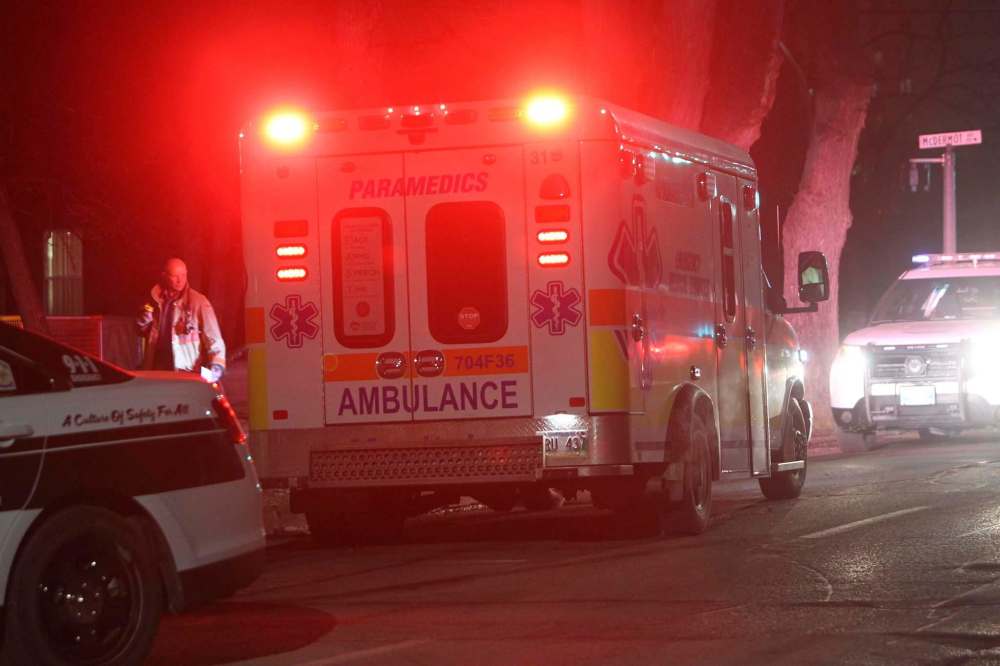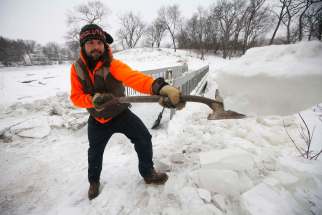Solutions needed for strained ambulance service
Read this article for free:
or
Already have an account? Log in here »
To continue reading, please subscribe:
Monthly Digital Subscription
$19 $0 for the first 4 weeks*
- Enjoy unlimited reading on winnipegfreepress.com
- Read the E-Edition, our digital replica newspaper
- Access News Break, our award-winning app
- Play interactive puzzles
*No charge for four weeks then billed as $19 plus GST every four weeks. Offer only available to new and qualified returning subscribers. Cancel any time.
Read unlimited articles for free today:
or
Already have an account? Log in here »
Hey there, time traveller!
This article was published 04/02/2020 (1787 days ago), so information in it may no longer be current.
When people call 911, they don’t want excuses. They don’t want to hear ambulance response times are slower these days because there’s been a big increase in demand without an increase in funding to buy more ambulances.
In a medical emergency, people want a trained professional to arrive, and every minute matters.
Unlike Winnipeg, many jurisdictions meet this need for speed by dispatching a single paramedic who travels to calls in a vehicle equipped with the apparatus necessary to begin treatment for emergencies such as cardiac arrest, bleeding, epileptic seizures or broken bones.

Delegating some emergencies to single paramedics would be a big change for Winnipeg. For the past two decades, emergency medical calls have typically been answered by fire trucks staffed by firefighter paramedics, followed shortly thereafter by an ambulance and crew.
The use of single-response paramedics should be investigated as an option for Winnipeg’s emergency services, whose current state could fairly be categorized as “code red.”
Statistics provided this week show the Winnipeg Fire Paramedic Service responded to 73,420 calls for emergency medical services in 2019, an increase of 31 per cent in annual calls since 2015. The upsurge is blamed partly on the so-called grey tsunami, the term used for the increasing number of baby boomers whose advancing age is accompanied by an accumulation of health problems.
Population growth and the city’s escalating methamphetamine crisis have undoubtedly also contributed to the strain.
It has also been suggested that the province’s move last year to cut ambulance fees in half — the fulfilment of an election promise by Premier Brian Pallister — might be a factor in increased demand for emergency-vehicle service.
Alarmingly, the situation — too many patients, not enough ambulances — is so serious that, as was reported this week, there were more than seven hours in December when all available ambulances were busy and Winnipeg did not have a single ambulance free to respond to emergencies.
At least six more ambulances are needed to augment the 28 ambulances currently in service, said WFPS deputy chief Christian Schmidt.
The problem, of course, is the price tag. Each new ambulance would cost $2.2 million for staff, training and overhead. That’s money government is not inclined to spend. Funding for paramedic services in Winnipeg has been frozen since 2016 when a service agreement between the city and the province expired.

The challenge is how to answer more ambulance calls without buying more ambulances. A possible answer was provided by Ryan Woiden, president of the paramedics union, who noted other cities often send just one paramedic to some types of emergency calls.
These single-response units are typically dispatched to patients whose medical emergencies are not life-threatening. These vehicles don’t have stretchers and can’t transport patients, but the paramedic is qualified to judge whether the patient should be transported to hospital or, as often is the case, can be stabilized by the paramedic’s treatment so an ambulance is not required.
When hospitalization is required, these paramedics don’t have to go along, freeing them up to attend to other calls.
In a medical emergency, time is critical. The response time is Winnipeg averages about 13 minutes, which exceeds the national standard of approximately nine minutes. Civic administration should be tasked to study how single-response units have helped emergency services in other cities, and how they might be integrated here.
What matters to a patient in crisis is that an emergency medical professional arrives as quickly as possible. It matters less whether that crucial help arrives in a fire truck or an ambulance.











